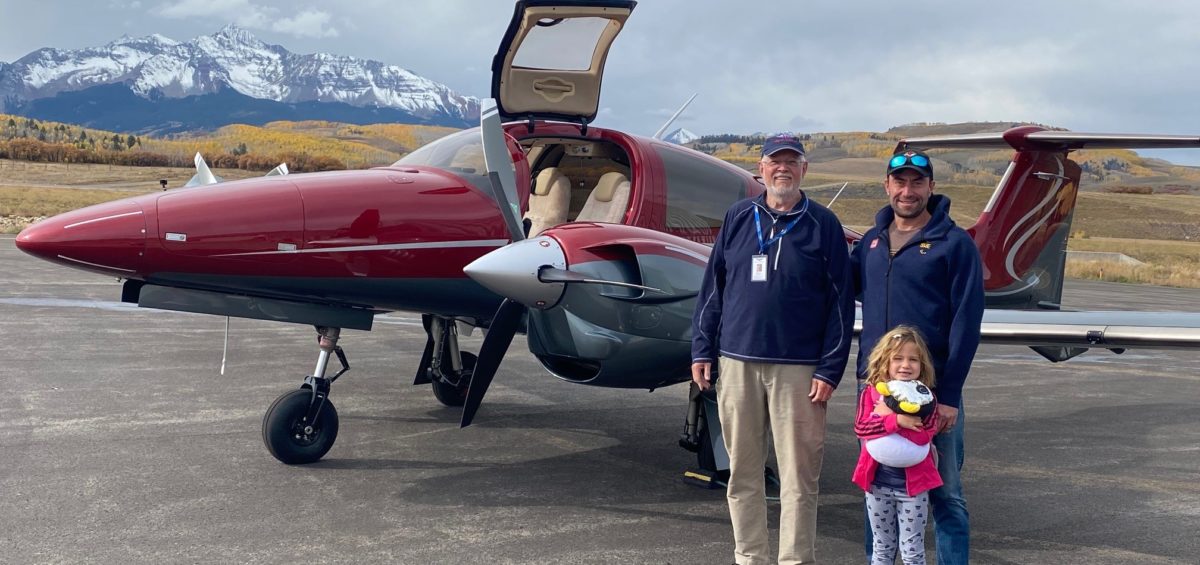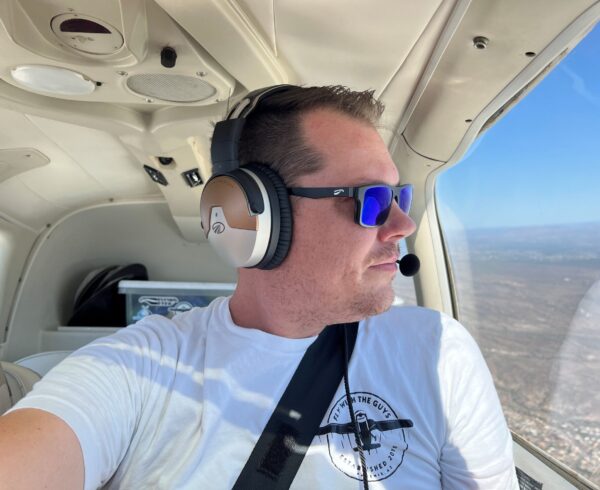Angel Flight West, founded by a group of pilots in 1983, connects pilots willing to donate flights with people who need to travel for healthcare or other critical needs and for whom commercial flights are not an option. Over the 40 years since its founding, AFW pilots have flown almost 100,000 missions, flying patients from smaller towns and rural areas to cancer centers or flying caregivers and family members to help patients.



Cheri Cimmarrusti, Angel Flight West’s Associate Executive Director, emphasizes how critical volunteer pilots are to these patients’ lives: “There are many passengers who literally would not be able to access the care that they need if it weren’t for Angel Flight.” But she also says volunteer pilots provide more than transportation. “For most people that fly, this is their first chance to be in a small plane, and sometimes in an airplane, period. It can be a little daunting, but we actually get feedback from customers who find the experience spiritual in a way. It’s quiet. They’re above the clouds, they can enjoy the beauty. For moms of sick kids, their children may fall asleep, and there’s nothing pulling at them. They can relax and enjoy the beauty. It’s a moment of peace.”
Unlike his passengers, AFW volunteer pilot Steve Zimmermann was “raised in planes.” His dad was a college engineering professor, and his mom was a classical cellist but flying was their passion. The family lived in a house trailer west of Boston, and they didn’t own a car, but they owned a Piper Cub. When Steve was a baby, his dad rigged up a sling for him in the back of the Cub. He started taking the control at age 7, soloed at 16, and actually got his first commercial and CFI ratings in gliders before getting his commercial and instrument ratings in airplanes. Zimmermann owned a glider flight school in Boulder, Colorado, for years before going back to grad school. After grad school, he spent his career as a systems and software engineer in the medical device industry, always owning a plane and flying while working and raising a family. When he retired, he bought his first planes with more than 2 seats, first a Bonanza A36, then a twin-engine Diamond DA62.
Zimmermann has been flying for AFW for about 6 years. He knew of the organization, and it turned out that the pilot who sold him his current hangar was an AFW command pilot. He suggested that Zimmermann consider signing up with AFW, now that he had a large enough plane, and he did. Zimmermann flies out of Erie Municipal Airport, west of Denver, so he flies a lot of patients to Children’s Hospital in Denver, and he says he was surprised at first by how vital his passengers were. “These kids have been dealt a tough hand. But they’re invariably upbeat, and they love flying in the little airplane. They can’t imagine how different it is flying in a small plane from Billings, Montana, to Denver versus driving until they do it.”
Zimmermann also flies a lot of patients from Durango, on the west side of the state, to Denver, and he does a lot of multi-leg flights that start in Montana or Wyoming and end in Denver. He has sometimes even flown to Billings and back in a day. He averages about a flight a month, as weather and his time permit. (In the early days of the Covid pandemic, he also flew supplies into small rural hospitals.) There are half a dozen patients he’s flown more than once, and one of his first passengers is still making the trip after 5 or 6 years. He gets to know some his passengers a bit, some not as much. “Small planes are physically much easier for passengers to deal with than commercial airlines, and that’s a benefit I can provide. Beyond that, some people want to talk. Some are just happy to be getting where they need to go without driving. It’s all good.”
“Like all of us who fly for Angel Flight, I love to fly, and I love helping people. Volunteering lets me do both at the same time. Honestly, it’s a win-win.”
Steve Zimmerman
But there are missions that stand out in his memory: “There was a 5-year-old who had started undergoing cancer treatment at age 2 or 3. He survived the cancer, and then decided he wanted to pursue a medical career. I had the chance to fly him to Monta Vista, in southern Colorado, so he could spend a day shadowing a doctor in the small regional hospital there. You know, this five-year-old boy just lit up with the idea that he was going to fly in an airplane and spend a whole day in a hospital doing what his heroes do. That was pretty cool.”


Zimmermann heartily recommends Angel flights to other pilots. “It’s a chance to give back and it’s a great thing to do with your airplane. Lots of airplanes don’t get much use. It’s good for the plane and the pilot to fly regularly, and this gives you a really great excuse to go flying.” If you’re interested in volunteering, Zimmermann says having your instrument rating will allow you to fly and complete more missions. You need to have or have access to a plane with at least 4 seats, since a patient often needs to have a companion or medical caregiver with them. And in the Rockies, where he lives, “mountain flying experience is a must.” He also recommends flying a few missions first as a mission assistant to another pilot, so you can learn the ropes.
Zimmermann says that Angel Flight missions can also be an opportunity to see new places. For example, on one 3-leg mission to southern California, his wife went along, and, after the AFW drop-off, they enjoyed a California vacation. But the bottom line for him is the chance to give back. “Like all of us who fly for Angel Flight, I love to fly, and I love helping people. Volunteering lets me do both at the same time. Sometimes it’s hard to watch what the kids I fly are going through, but at least I feel like I can do some good for them. And the patients themselves are so upbeat and so grateful for the help that it’s really rewarding. Honestly, it’s a win-win.”















Leave a Comment